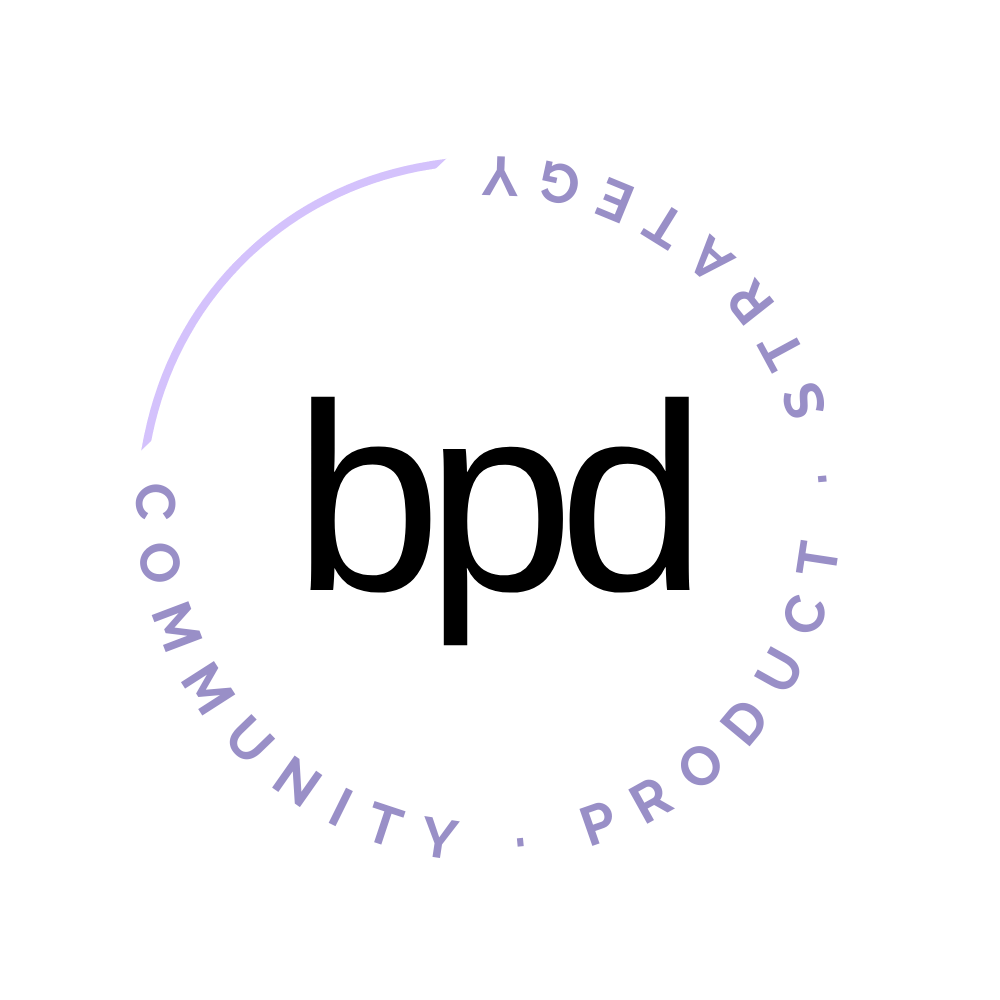#37 Pivots In Life + Products
Next week I'm taking a step back from my normal day-to-day and teaching a UX Design cohort with General Assembly (GA) – it's full time for one week with 48 hours of class time 😅 (I'm taking bets on if the bpd beat goes out next week)...
GA serves people interested in pivoting to tech or up-skilling with modern tech skills like UX Design, Product Management, Web Development, etc. Fun fact: I'm an alumni.
Prepping for class has me thinking a lot about pivots this week and so I wanted to share that with you.
After graduating with a Bachelor of Architecture from Pratt Institute I quickly realized working as an architect wasn't what I dreamed of.
So I picked up and moved to Silicon Valley and completed a 400 hour certification in User Experience Design from General Assembly. It was an in-person, immersive experience.
I loved every minute. I found my thing.
But along the way I have pivoted again and again and again... with a silly amount of title and department changes.
I've designed insurance apps for Berkshire Hathaway, led design-thinking workshops for startups, led the product development of marketing platforms, executed web accessibility audits, created strategies for mobile apps for healthcare companies, and most recently, I've managed membership experience, programming, and retention in the information industry.
For a long time I thought I just keep turning a completely different direction...maybe I'm lost. But now I realize how connected what I do now is because of what bothered me about the architecture industry.
Commercial architects are hired to design buildings that serve a commercial developers' business goals. For example, build a multi-purpose building that offers X square feet of retail space, Y square feet of office space, and 100 residential units ranging from studio to 3bd.
The developer will have analyzed the location for optimizing profitability, but most don't build with community or prioritize their needs (disclaimer: there are non-profits that do prioritize this). And then architects don't have the budget and time to do the social-driven research needed to actually build a space the existing community will love and thrive in.
I always wanted to ask why? Are we sure that's what we should build here? Are people going to use this space the way we think they will?
Every once in a while we're blessed with a new space that represents the culture of its location and the needs of the community.
... but it's unfortunately rare.
When we prioritize community, we build better places (both online and in person).
And what I've realized about pivots is that every single experience enriches the next, no matter how much of a left turn it is.
Every chapter is meaningful and gives you the unique skills required to do whatever you'll do next, whatever you were meant to do.
Pivoting Your Products
While I was at bossbabe I heard this question again and again from our members:
"What I'm doing isn't working. But how do I know when to pivot and how do I know to keep at what I'm already doing."
And the blessing + curse of an entrepreneur mind is that you have 500 directions you could see yourself going all the time all at once. So you're constantly second guessing your direction.
But pivots don't have to be so major.
I would talk to entrepreneurs who told me coaching didn't work so they pivoted to selling dog accessories... I mean... sure I guess that works but the decision-making strategies were wild.
You're never going to get it right the first time.
The first launch is messy. The first version is imperfect. Even if you launched too late and it's super "polished" – it's not going to be a home run. You will have to pivot.
But what you do next is what matters. Here are a few tips:
Take time to understand what is working and what isn't – Reach out to customers, analyze all the reasons people are cancelling, leaving or complaining. Understand what is most beloved about your product and what no one seems to care about.
Avoid reacting to one customer's requests – Make sure that you're reacting to trends – look at the data you have and have conversations with 3 or more customers before making a change.
Don't be afraid of reinvention – Reinvent your product with what does work about it. Instagram famously started as a check-in app called "Burbn" until they noticed that photos were really catching on and so they stripped back the feature functionality. I'd say that worked out.
Check your ego at the door – Sometimes we are so tied to our ideas that we refuse to let go. Let the research guide you to the solution. If your business doesn't solve a problem for customers, you don't have a business.
If you loved this, you’ll love my free newsletter. I send the bpd beat once per week and it includes the latest essay or video, resources, inspiration and a behind the scenes look at my projects and client work
